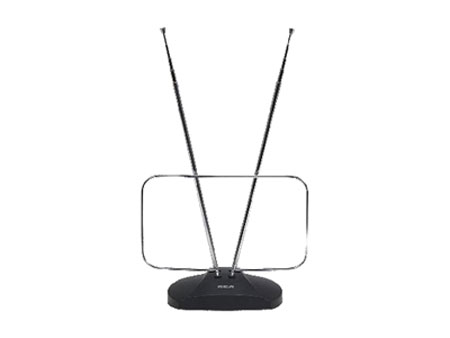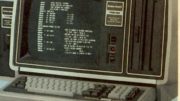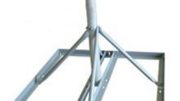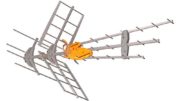Sure, they were all the rage in 1955. Today’s antennas look sleeker and sexier than these old rabbit ears, but believe it or not, this is an image from our current catalog. That’s right, we still sell these. People buy them, too, and from what we’re able to tell, they’re still making people perfectly happy.
How do “Rabbit Ears” work?
The old-school “Rabbit Ears” antenna has been around for a long time because it’s based on a very sound principle of antenna design: the variable-length dipole. Different TV frequencies require antennas of different sizes for best reception, and by extending and moving the individual antenna elements, you can often get better reception. That makes the rabbit ears antenna one of the most flexible antennas available, and because the technology is anything but new, it’s also one of the most affordable.
The myth of Rabbit Ears
There is something you need to know, however… the actual rabbit ear part of the antenna is really only designed for VHF. The chrome rectangle in the center is the UHF antenna, and since most local channels in the US are now using UHF frequencies, it makes the rabbit ear design less important.
How important is a VHF antenna?
For the last decade, conventional wisdom taught that VHF reception wasn’t important. There were a few large markets where there were still a lot of VHF broadcasters (New York and Los Angeles spring to mind). In these markets these antennas might be helpful to you, but in most other markets, the rabbit ears part would only help you for at most one station, and the rest of them will be using that chrome rectangle.
That’s changing, at least a little bit. In order to make room for 5G, channels 37-51 are going away. Although you probably didn’t realize it, channels 52-83, which you may remember from your old TV, already got shut off years ago. As broadcasting equipment has gotten better, so many channels just weren’t needed. The only reason they were ever needed was to maintain spacing between broadcast channels. Today that’s not a big concern.
You can find out when your area’s channels are shuffling around with this handy guide. When that happens, you’ll need to rescan to make sure you keep getting your local channels. At that time, more of your locals could come from VHF, since those UHF channels won’t exist. (By the way, VHF isn’t very good for cell signals, that’s why 5G is using UHF not VHF.)
How to get the best advice
There’s no denying the allure of those low-priced rabbit ears. If you’re sure they’ll do a good job for you then by all means, pick them up. If you’re not sure, it might be better to get something more modern.
We can help you figure out what stations in your market are VHF and which ones are UHF, and can even recommend the best antenna if you fill out our antenna request form. If most of the stations in your local market are UHF stations, you’re probably better with a larger indoor antenna. It will work better and have a more modern look.
Do you want personalized advice from someone over the phone? Call our US-based call center at 888-233-7563. If it’s after East Coast business hours, fill out the form below. Someone will get back to you, usually in about 24 hours.





